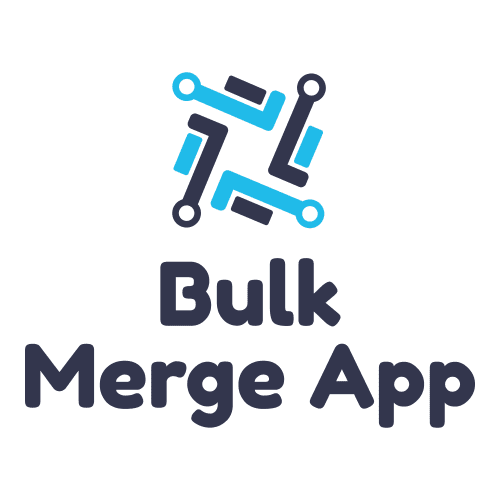Salesforce Implementation Checklist: A Comprehensive Guide

Introduction:
Salesforce is a powerful customer relationship management (CRM) platform that can revolutionize the way businesses manage their sales, marketing, and customer service processes. Implementing Salesforce successfully requires careful planning, preparation, and execution. In this blog post, we will provide you with a detailed Salesforce implementation checklist to ensure a smooth and successful implementation.
Define Objectives and Scope:
- Clearly define your organization’s objectives for implementing Salesforce. Identify specific pain points and desired outcomes.
- Determine the scope of your implementation, such as the departments, processes, and functionalities that will be included.
Form an Implementation Team:
- Assemble a cross-functional team with representatives from key departments, including sales, marketing, customer service, and IT.
- Assign a project manager responsible for overseeing the implementation process and coordinating team efforts.
Conduct a Needs Assessment:
- Analyse your current processes, data, and systems to identify gaps and areas for improvement.
- Engage with stakeholders to gather requirements and understand their expectations.
- Document the processes and workflows that Salesforce will support.
Data Clean-up and Migration:
- Perform a thorough data clean-up to ensure data integrity and consistency before migration.
- Identify and resolve duplicate records, incomplete data, and inconsistencies.
- Plan and execute a data migration strategy, including mapping fields and defining data transformation rules.
Configuration and Customization:
- Configure Salesforce according to your organization’s specific needs and processes.
- Customize data fields, page layouts, record types, and validation rules to align with your business requirements.
- Define workflows, automation rules, and assignment rules to streamline processes.
User Training and Adoption:
- Develop a comprehensive training plan for end-users to ensure a smooth transition.
- Provide training sessions, workshops, and resources to educate users on Salesforce functionality.
- Encourage user adoption by demonstrating the benefits of Salesforce and addressing any concerns.
Integration with Third-party Systems:
- Identify the systems that need to integrate with Salesforce, such as email clients, marketing automation tools, or ERP systems.
- Evaluate and select suitable integration methods, such as using pre-built connectors or custom integration solutions.
- Test the integrations thoroughly to ensure data flows seamlessly between systems.
Testing and Quality Assurance:
- Create a test plan that covers all aspects of your Salesforce implementation, including functionality, workflows, reports, and integrations.
- Perform comprehensive testing to validate that Salesforce meets the specified requirements and resolves identified issues.
- Conduct user acceptance testing (UAT) to involve end-users and gather feedback before the final deployment.
Change Management and Communication:
- Develop a change management strategy to ensure a smooth transition and minimize resistance.
- Communicate the benefits of Salesforce to all stakeholders, emphasizing how it aligns with their goals and improves their work processes.
- Provide ongoing support and address concerns and questions as they arise during the implementation and beyond.
Post-Implementation Evaluation:
- Evaluate the success of your Salesforce implementation against the defined objectives and key performance indicators (KPIs).
- Gather feedback from users and stakeholders to identify areas for further improvement.
- Continuously optimize and enhance your Salesforce instance to meet evolving business needs.
Additional Tips for a Successful Salesforce Implementation
Here are some additional tips for a successful Salesforce implementation:
- Get buy-in from all stakeholders. It is important to get buy-in from all stakeholders in your organization before you start the implementation process. This will help to ensure that everyone is on board and committed to the success of the project.
- Plan for change. Implementing Salesforce is a major change for any organization. It is important to plan for change and to communicate with your employees throughout the process.
- Be patient. Implementing Salesforce takes time. It is important to be patient and to set realistic expectations.
- With careful planning and execution, you can successfully implement Salesforce and reap the benefits of this powerful CRM platform.
Conclusion:
Implementing Salesforce requires careful planning, execution, and continuous evaluation. By following this comprehensive Salesforce implementation checklist, you can ensure a successful implementation that aligns with your organization’s objectives and maximizes the benefits of the CRM platform. Remember to involve key stakeholders, prioritize user training and adoption, and maintain effective communication throughout the process. With proper planning and execution, Salesforce can transform your business operations and drive success.
Consult Salesforce Experts for Salesforce Implementation Checklist
“Seeking guidance from Salesforce experts is crucial for ensuring a seamless implementation of Salesforce. Their expertise and experience will help you navigate through the implementation checklist and optimize the platform to meet your specific business needs.”
“Consulting Salesforce experts will provide you with invaluable insights and best practices to streamline your implementation checklist, ensuring a successful deployment and maximizing the benefits of Salesforce for your organization.”
As a technology partner, Astreca can help your business make the most of your Salesforce experience. Whether you are working with legacy systems or starting from the ground up, our team will ensure fast and accurate project delivery with optimal results. Contact Astreca today.
#BusinessOptimization #CRMConsulting #ImplementationChecklist #PlatformPerformance #SalesforceBestPractices #SalesforceConsulting #SalesforceCRM #SalesforceImplementation #SalesforceServices #SalesforceStrategy






